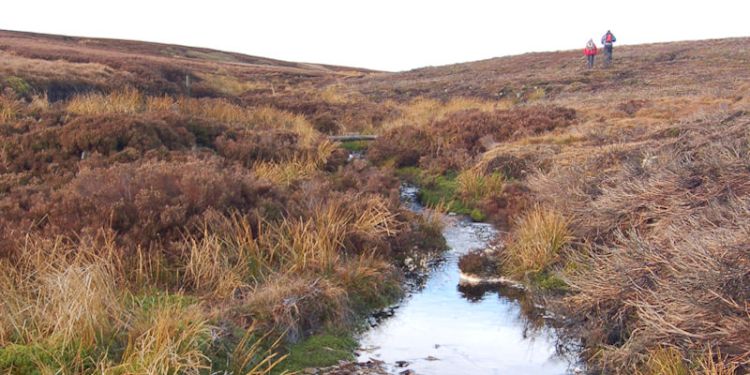Bringing economic benefits to consumers and the water industry

The water industry sources much of the country’s drinking water from the peat-covered upland areas of the UK, but it faces a major challenge in taking out the yellow-brown colour the water naturally takes on. Expensive chemical treatments have traditionally been used, but research at the School of Geography shows that addressing the problem at source through upland land management may be a longer term, more sustainable treatment solution.
The colour problem is caused by naturally occurring dissolved organic carbon (DOC) entering the water from the peat soil and vegetation. It has to be removed to meet strictly regulated drinking water standards and to eliminate disinfection by-products.
Over the past decade the research into land management solutions in the School of Geography has had a major impact on the way water companies like Yorkshire Water, and other landowners, are managing the uplands. The results are also bringing long term benefits to biodiversity in these habitats.
The cost of historical damage
Last century, thousands of kilometres of drainage channels were dug across the peat uplands of Britain in efforts to improve the land for grazing. The peat soil, which is over 90% carbon, began to dry out and erode, washing into rivers and reservoirs. Field research by Professor Joseph Holden from the School of Geography, showed that these peatland drains were responsible for increased water colour production and sediment release.
Further research by Professor Lee Brown and colleagues showed that the traditional practice of burning heather on peat moorland used for grouse, impacts negatively on stream aquatic life and increases the dissolved organic carbon entering the water.
Many areas of upland peat have lost vegetation cover and become severely eroded and gullied as a result of drainage schemes and historical pollution, which also contributes to the water colour problem.
Shifting the solution to land management
Yorkshire Water, who serve 1.8 million households and 13,000 businesses, own and manage much of the peat uplands in their region. They were keen to find new ways of managing their assets that reduce the need for costly colour treatments. They established a formal partnership with the School of Geography in 2005 to streamline research and development activity aiming to devise upland water management strategies to remedy the water colour problem.
Large scale field trials showed that blocking the peatland drains could improve the water quality, bringing reduced costs to the water companies and their customers. Other new catchment management strategies included blocking erosion gullies, revegetating bare peat, heather removal and raising water tables to encourage peat-building Sphagnum moss species and sedges. Alternatives to heather burning were discussed with tenants and owners of moorland shooting rights on or adjacent to Yorkshire Water land. Spatial maps were produced showing which areas of land had the potential to deliver the worst colour and where improvements could most effectively be achieved through land management.
The research provided the scientific basis for Yorkshire Water to shift to catchment management change as its primary strategy to stabilise water colour and DOC. This saved the need to build even more expensive end-of-pipe treatment technologies, although these are still used as part of a ‘twin-track’ approach where there is an immediate risk to water quality. This in turn benefits customers through lower water bills.
Other water companies such as South West Water, United Utilities and Northumbrian Water have now adopted the land management approach and are sharing best practice.
Benefits for nature
The landscape-scale change in these upland habitats has resulted in very significant benefits for nature. Upland pools, streams and rivers all showed an increase in biodiversity after drain blocking. Yorkshire water own 11,500ha of land classified as Sites of Special Scientific Interest (SSSI) and in 2003 only 9% was reported as being in a good or recovering condition, compared with 99.9% in 2011, after the new strategy was implemented.
The UK’s peat uplands are its most important carbon store and are vitally important to mitigating climate change. They store many times more carbon than all the nation’s forests. Drying and degrading peat releases the stored carbon in the soil, but as peatlands recover they are able to actively bind up an extra 10,000 tonnes of carbon dioxide from the atmosphere each year.
Find out more
Visit: REF impact case studies

